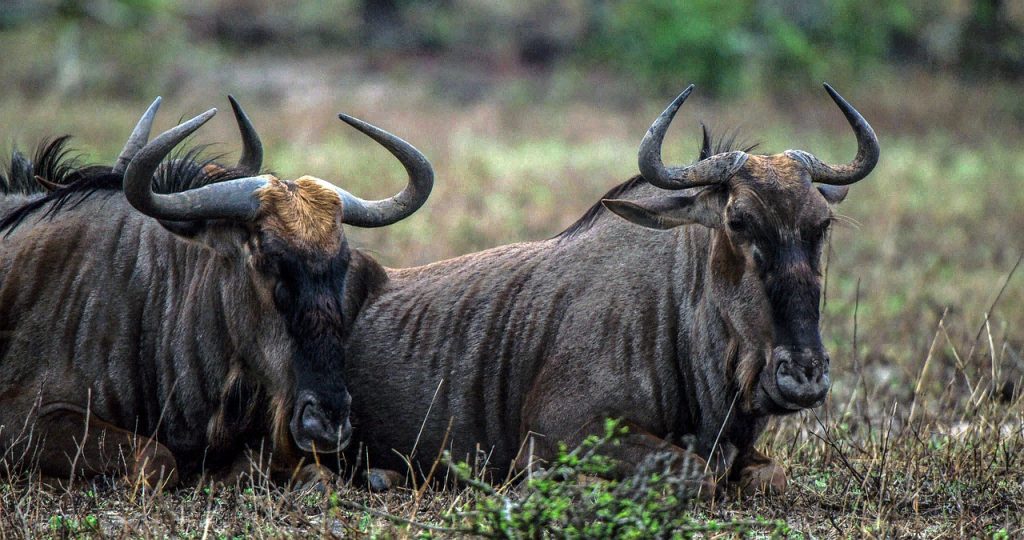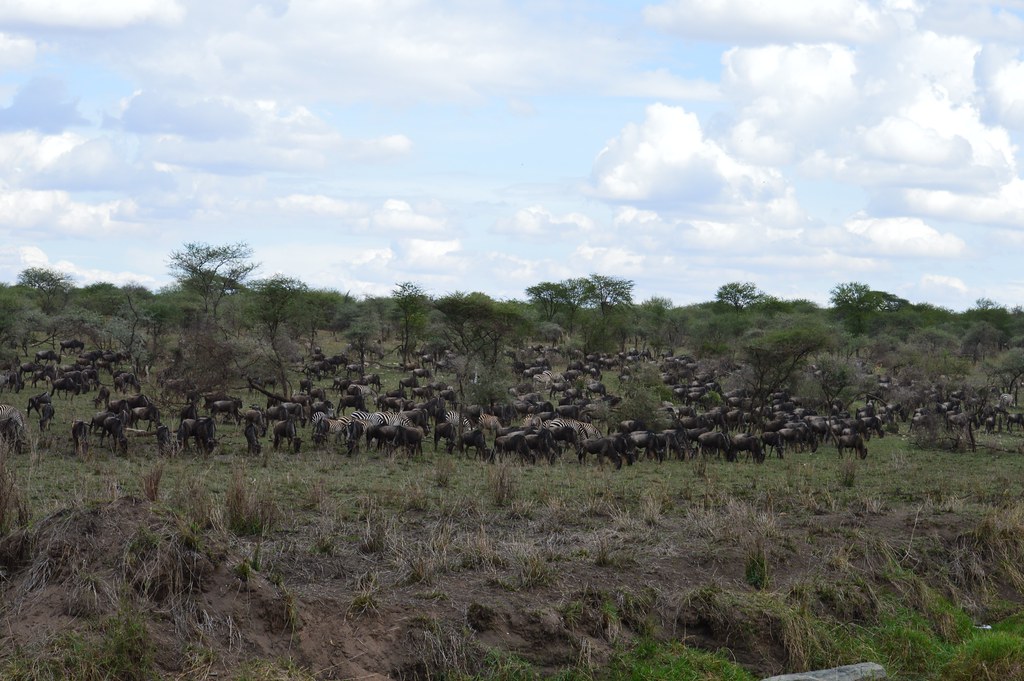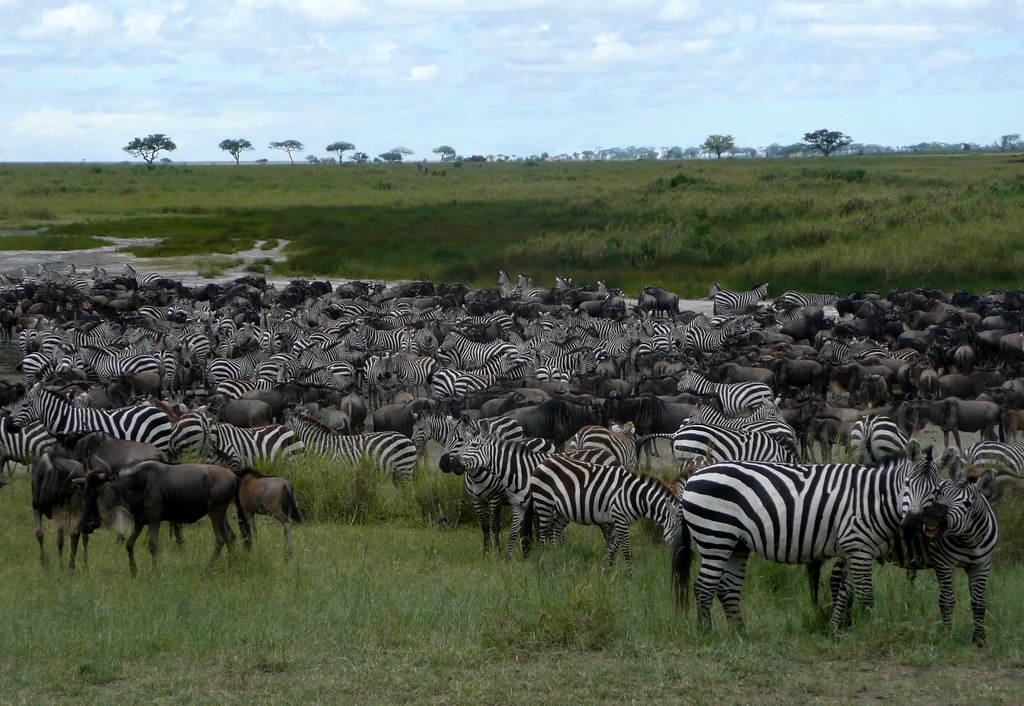The Masai Mara wildebeest migration is one of the most spectacular natural events on Earth, involving the annual movement of over a million wildebeest, zebras, and other herbivores across the vast grasslands of the Serengeti-Mara ecosystem in East Africa.
This incredible spectacle is not only a testament to the sheer scale and diversity of life on our planet, but it also has immense ecological and cultural significance, with the migration playing a vital role in maintaining the health of the ecosystem and the livelihoods of the Maasai people who call this region home.
The migration is a true wonder of the natural world, drawing visitors from around the globe to witness the awe-inspiring sight of thousands of animals moving in unison across the plains.
The Masai Mara wildebeest migration is a unique and special event for several reasons:
- Scale: The migration involves over a million wildebeest, zebras, and other herbivores, making it one of the largest land animal migrations on the planet.
- Diversity: The migration also includes various species, such as wildebeest, zebras, gazelles, and elands, creating a unique ecosystem of predators and prey.
- Timing: The migration is an annual event that follows a predictable pattern, making it a highly anticipated natural phenomenon.
- Difficulty: The migration is a challenging and dangerous journey for the animals, as they must navigate predators, harsh weather conditions, and various obstacles along the way.
- Ecological significance: The migration plays a crucial role in maintaining the health of the ecosystem, as the animals help to fertilize the soil, spread seeds, and support a diverse range of predators.
- Cultural significance: The migration is also of immense cultural importance to the Maasai people, who have lived in harmony with the wildlife in this region for centuries and view the migration as a symbol of their cultural heritage.
These unique characteristics make the Masai Mara wildebeest migration an extraordinary natural event that captures the imagination of people around the world.
The Timing of the Wildebeest Migration
The wildebeest migration is an annual event that takes place in the Serengeti-Mara ecosystem of East Africa, spanning over 1,800 miles (2,900 km) across Tanzania and Kenya.
The migration process can be divided into several stages:
- Calving Season (January-March): The migration begins with the wildebeest calving season in the southern Serengeti plains of Tanzania, where over 500,000 wildebeest give birth to their young.
- Grassy Plains (April-May): After the calving season, the wildebeest move towards the western corridor of the Serengeti, following the fresh grasses that grow after the rains.
- Crossing of the Grumeti River (June-July): The wildebeest then cross the Grumeti River, a hazardous obstacle due to the presence of large crocodiles.
- Northern Serengeti (July-October): The wildebeest continue moving northwards towards the Maasai Mara in Kenya, crossing the Mara River and encountering predators such as lions, leopards, and cheetahs.
- Return to the Southern Serengeti (November-December): The migration concludes with the return of the wildebeest to the southern Serengeti plains, where the cycle begins again.
The timing of the migration varies slightly each year, depending on the rainfall patterns and availability of grass, but generally follows this pattern.
The wildebeest migration is a continuous cycle, with different herds of wildebeest moving at different stages of the journey, creating a constant flow of animals across the ecosystem.
Interested in a Wildebeest Migration Safari Package?
Click "Get Safari Quote" below to contact us and we will provide you a competitively priced safari package to take you to Masai Mara to go see the migration
Factors That Trigger The Migration
The factors that trigger the wildebeest migration are primarily related to the availability of food and water, as well as the reproductive cycle of the animals. The wildebeest migrate in search of fresh grazing lands, following the rain patterns that provide new growth of grasses.
The timing of the migration is also influenced by the breeding season, as the wildebeest prefer to calve in the southern Serengeti where the grass is most nutritious.
The migration follows a circular route through the Serengeti-Mara ecosystem, with the wildebeest traveling in a counterclockwise direction each year. The route covers a vast area of grasslands, woodlands, and riverine forests, including the Serengeti National Park and the Maasai Mara National Reserve.
The wildebeest migration is characterized by three main routes:
- The Western Corridor Route: This route follows the western edge of the Serengeti ecosystem, crossing the Grumeti River and passing through the Grumeti Game Reserve.
- The Northern Route: This route takes the wildebeest towards the northern Serengeti, where they cross the Mara River into the Maasai Mara National Reserve in Kenya.
- The Southern Route: This route leads the wildebeest back to the southern Serengeti plains, where they calve and feed on fresh grasses.
The wildebeest do not follow a single, fixed route, and the timing and direction of their movement can vary from year to year, depending on the rainfall patterns and availability of food and water.
Despite this variability, the wildebeest migration remains one of the most predictable and remarkable natural events in the world.
Challenges The Animals Face During The Migration
The wildebeest migration is a challenging journey for the animals, as they must navigate a range of obstacles and dangers along the way. Some of the key challenges that the wildebeest face during their journey include:
- Predators: The wildebeest are preyed upon by a range of large predators, including lions, hyenas, cheetahs, and crocodiles. These predators often target the weakest and most vulnerable members of the herd, such as calves and sick or injured animals.
- Natural hazards: The migration also involves crossing treacherous rivers, such as the Mara and Grumeti Rivers, where the wildebeest are at risk of drowning or being attacked by crocodiles. Harsh weather conditions, such as droughts and floods, can also be a significant challenge for the animals.
- Exhaustion and disease: The long journey and intense physical exertion can lead to exhaustion and injury, making the wildebeest more susceptible to disease and other health problems.
- Human interference: Human activities, such as poaching, hunting, and habitat destruction, can also pose a significant threat to the wildebeest and their ecosystem.
Despite these challenges, the wildebeest migration continues year after year, driven by the animals’ innate instincts and the need to find food and water. The migration is a testament to the resilience and adaptability of these remarkable animals.
Role Of The Ecosystem In Supporting The Wildebeest Migration.
The wildebeest migration is a complex natural phenomenon that depends on the interplay of various ecological factors and processes within the Serengeti-Mara ecosystem.
The ecosystem plays a crucial role in supporting the migration by providing the necessary resources and habitats for the wildebeest to complete their journey. Here are some of the key ways in which the ecosystem supports the wildebeest migration:
- Food and water: The wildebeest migration is driven by the search for fresh grazing lands and water sources. The Serengeti-Mara ecosystem is characterized by a mosaic of grasslands, woodlands, and riverine forests that provide a variety of food sources for the wildebeest, including grasses, herbs, and browse. The Mara and Grumeti Rivers, as well as other water bodies, provide essential water sources for the wildebeest and other animals during the dry season.
- Predators and scavengers: The ecosystem also supports a diverse community of predators and scavengers, which play a critical role in regulating the population of the wildebeest and other herbivores. Predators such as lions, hyenas, and cheetahs hunt the wildebeest, while scavengers such as vultures and jackals feed on their carcasses, recycling nutrients back into the ecosystem.
- Habitat and landscape: The Serengeti-Mara ecosystem provides a range of habitats and microclimates that support the various stages of the wildebeest migration. The southern Serengeti plains provide the ideal conditions for calving, while the western corridor and northern Serengeti offer fresh grazing lands and river crossings. The Maasai Mara National Reserve in Kenya provides a critical refuge for the wildebeest during the dry season when resources are scarce in other parts of the ecosystem.
- Ecological processes: The wildebeest migration is also shaped by various ecological processes, such as the cyclical patterns of rainfall, grass growth, and nutrient cycling. These processes are influenced by factors such as climate change, fire, and human activities, which can have both positive and negative impacts on the ecosystem and the wildebeest migration.
Overall, the Serengeti-Mara ecosystem plays a vital role in supporting the wildebeest migration, highlighting the interconnectedness and complexity of ecological systems and the importance of preserving and conserving these ecosystems for future generations.
Masai Mara Safaris Wildebeest Migration Packages
If you are interested in witnessing the wildebeest migration in the Masai Mara, there are various safari packages that you can choose from that we can offer you.
Package typically includes 2 or 3 nights’ accommodation in a tented camp or lodge and visits to the Mara River to witness the wildebeest crossing. The packages will also include transfers from Nairobi, meals, and park fees.
Other elements that can be included in the package include hot air balloon safaris, cultural visits to Maasai villages etc
Use the form below to contact us and we will provide you a competitively priced safari package to take you to Masai Mara to go see the wildebeest migration in Kenya.




